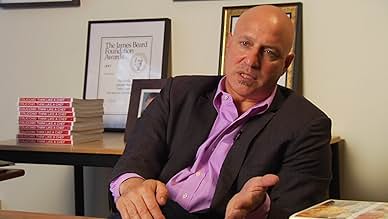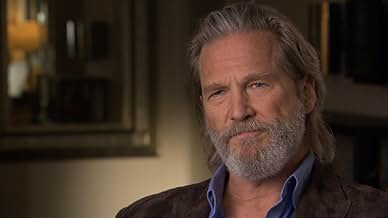VALUTAZIONE IMDb
6,9/10
1244
LA TUA VALUTAZIONE
Aggiungi una trama nella tua linguaA documentary that investigates incidents of hunger experienced by millions of Americans, and proposed solutions to the problem.A documentary that investigates incidents of hunger experienced by millions of Americans, and proposed solutions to the problem.A documentary that investigates incidents of hunger experienced by millions of Americans, and proposed solutions to the problem.
- Premi
- 1 vittoria e 2 candidature totali
Jim McGovern
- Self
- (as James McGovern)
Recensioni in evidenza
A PLACE AT THE TABLE (dir. Kristi Jacobson, Lori Silverbush) A brilliant documentary that confronts America's perennial inability to deal with the widespread problem of hunger in our nation. Ronald Reagan slashed federal programs that were beginning to solve the issue by the late 1970's, however he cynically felt that the matter would best be solved by relying on good old fashioned Christian charity. And it didn't work then, and it doesn't work now. Millions of Americans struggle daily with 'food insecurity' (you don't know where your next meal is coming from), and it seems that our leaders are convinced that the poor have it far too easy, and are just too dependent on the largess of the American tax payer. However, the film does expose the pertinent fact that America's richest food corporations were able to continue to enjoy 100% of their lavish federal government subsidy, yet the food stamp budget was severely cut to pay for a program to end childhood hunger. So much for our so called 'Christian' policies, and the film provides yet another reason for me to continue to be a proud secular humanist.
It's a national disgrace than nearly 50 million of our American neighbors live in homes that can't afford enough food. This compelling film explains why we have this problem, and, most importantly, what we can do to end it. Granted, I am biased because I fight hunger for a living, but I do think everyone in America should see this film.
The film powerfully documents the real lives of real people struggling against hunger. Each of them defy common stereotypes of hungry people.
Many Americans believe that we can end U.S. hunger one person at a time, one donated can of food at a time. They are well-meaning. But they are wrong, as this powerful film proves. When Ronald Reagan entered office in 1981, there were only a few hundred emergency feeding programs in America, most of which were traditional soup kitchens serving mostly the people who had been historically the most hungry—single men with substance abuse or mental illness problems. Yet, as a direct result of the economic policies and social service cuts set in motion by Reagan, the number of emergency feeding programs in America skyrocketed, and continued to do so even after he left office. There are now more than 40,000 such programs in America, and roughly two-thirds of them are food pantries, where parents and their children, the elderly, and working people obtain free groceries. Meanwhile, hunger has soared. The truth is that these agencies simply don't have anything close to the resources needed to meet the demand. The organization I manage, the New York City Coalition Against Hunger, found that, in 2011, close to sixty percent of the approximately 1,100 soup kitchens and food pantries in the city were forced to ration food because they lacked resources, either reducing portion size, limiting hours of operation, or turning away hungry families. These agencies are so under-funded that nearly 50 of them were forced to close in New York City in just the last few years.
This vital film proves that the only way to truly end U.S. hunger is by advocating for fundamental change that include living wage jobs and a robust government safety net.
The film powerfully documents the real lives of real people struggling against hunger. Each of them defy common stereotypes of hungry people.
Many Americans believe that we can end U.S. hunger one person at a time, one donated can of food at a time. They are well-meaning. But they are wrong, as this powerful film proves. When Ronald Reagan entered office in 1981, there were only a few hundred emergency feeding programs in America, most of which were traditional soup kitchens serving mostly the people who had been historically the most hungry—single men with substance abuse or mental illness problems. Yet, as a direct result of the economic policies and social service cuts set in motion by Reagan, the number of emergency feeding programs in America skyrocketed, and continued to do so even after he left office. There are now more than 40,000 such programs in America, and roughly two-thirds of them are food pantries, where parents and their children, the elderly, and working people obtain free groceries. Meanwhile, hunger has soared. The truth is that these agencies simply don't have anything close to the resources needed to meet the demand. The organization I manage, the New York City Coalition Against Hunger, found that, in 2011, close to sixty percent of the approximately 1,100 soup kitchens and food pantries in the city were forced to ration food because they lacked resources, either reducing portion size, limiting hours of operation, or turning away hungry families. These agencies are so under-funded that nearly 50 of them were forced to close in New York City in just the last few years.
This vital film proves that the only way to truly end U.S. hunger is by advocating for fundamental change that include living wage jobs and a robust government safety net.
After watching this documentary, all I can say is, some Americans are downright HYPOCRITES. By pushing their pretensions to help the world, with setup movies and all the Cr*** that we see
The most chocking part is that, we can never see those faces in world vision add! But they exist.
Now, Africa does not look so bad after all 50millions in one country? That almost the same for Africa (the continent) with over 50 something countries in it. Instead of American government to admit and call it what it is starvation, like always they plays with words "food insecurity" hum How is it possible to let my own family starve and give food to my neighbour's?
The most chocking part is that, we can never see those faces in world vision add! But they exist.
Now, Africa does not look so bad after all 50millions in one country? That almost the same for Africa (the continent) with over 50 something countries in it. Instead of American government to admit and call it what it is starvation, like always they plays with words "food insecurity" hum How is it possible to let my own family starve and give food to my neighbour's?
Lori Silverbush and Kristi Jacobson's documentary "A Place at the Table" is a film that every politician - indeed, every citizen - in America should be forced to sit through at least once (or as many times as it takes to get the message to effectively sink in). It makes a very persuasive case that, contrary to what most people think, hunger is a major problem in the United States, a nation that prides itself on being the wealthiest in the history of the world. Not only does the movie provide the startling statistics necessary to back that assertion up, but explains why this is the case.
Silverbush and Jacobson build their case in a meticulous, logical fashion, beginning with the common, counterintuitive fallacy that hungry people necessarily equal thin people. The movie explains how obesity and hunger often go hand in hand, thanks to the fact that, since junk food is cheaper than healthy food to purchase, the poor often fill up on empty calories rather than the nutritious ones that would actually make them healthy. This is a result of a misguided federal policy that provides subsidies for agribusinesses (as opposed to mom-and-pop farmers), who turn their grain and corn into inexpensive processed foods. Since farmers who grow fruits and vegetables work more independently of one another, they don't have the clout necessary to receive similar government support. This leads to a vicious cycle that winds up hurting poor people in both urban and rural areas where "food deserts" arise in which residents can barely find a fresh fruit or vegetable to purchase.
The movie rightly celebrates the many charities that pick up some of the slack, but it makes the case that that is simply not enough, that an entire paradigm shift may be necessary if we ever hope to solve the problem.
Ultimately, what we discover is that hunger is merely a symptom of a much greater set of problems - which are poverty, income inequality and a political system rigged to benefit the wealthy and powerful at the expense of the indigent and disconnected. Above all, the key lies in both the public and private sectors providing a living wage for their workers.
Finally, beyond all the statistics, beyond all the comments by experts and authorities on the subject, it is the voices of the parents, who can't afford to put nutritious food on the table for their children, and of the children themselves, who often go to bed hungry or malnourished, who wind up making the greatest mark on our hearts. It is their testimonials more than anything else that will hopefully move the rest of us to action.
A must-see film.
Silverbush and Jacobson build their case in a meticulous, logical fashion, beginning with the common, counterintuitive fallacy that hungry people necessarily equal thin people. The movie explains how obesity and hunger often go hand in hand, thanks to the fact that, since junk food is cheaper than healthy food to purchase, the poor often fill up on empty calories rather than the nutritious ones that would actually make them healthy. This is a result of a misguided federal policy that provides subsidies for agribusinesses (as opposed to mom-and-pop farmers), who turn their grain and corn into inexpensive processed foods. Since farmers who grow fruits and vegetables work more independently of one another, they don't have the clout necessary to receive similar government support. This leads to a vicious cycle that winds up hurting poor people in both urban and rural areas where "food deserts" arise in which residents can barely find a fresh fruit or vegetable to purchase.
The movie rightly celebrates the many charities that pick up some of the slack, but it makes the case that that is simply not enough, that an entire paradigm shift may be necessary if we ever hope to solve the problem.
Ultimately, what we discover is that hunger is merely a symptom of a much greater set of problems - which are poverty, income inequality and a political system rigged to benefit the wealthy and powerful at the expense of the indigent and disconnected. Above all, the key lies in both the public and private sectors providing a living wage for their workers.
Finally, beyond all the statistics, beyond all the comments by experts and authorities on the subject, it is the voices of the parents, who can't afford to put nutritious food on the table for their children, and of the children themselves, who often go to bed hungry or malnourished, who wind up making the greatest mark on our hearts. It is their testimonials more than anything else that will hopefully move the rest of us to action.
A must-see film.
To the people going on about, and snubbing that "obese people just drink soda etc." you really miss the point. So much about hunger, and this documentary pertains to ACCESS. Why in the richest country in the world are there food deserts? It's all great to say, eat broccoli instead of chips, but in many parts of the world, the chips are the cheaper, and only food available. Why? We can not all afford or even have access to organic, lush foods. That is part of the problem. Not to mention lack of liveable wages. And, why should the church be solving the problem of hunger? Our ideology devalues human life. Years later if the Covid pandemic has taught us nothing, it's that most people are a just a pay check away from being food insecure. It has zero to do with weight, or laziness or whatever myopic excuses people who apparently never suffered a day in their life, portend to make it about.
Lo sapevi?
- QuizThe original title for this documentary was "Hungry in America."
- ConnessioniFeatured in Moyers & Company: United States of ALEC: A Follow-Up (2013)
I più visti
Accedi per valutare e creare un elenco di titoli salvati per ottenere consigli personalizzati
Dettagli
- Data di uscita
- Paese di origine
- Sito ufficiale
- Lingua
- Celebre anche come
- Mesto za stolom
- Luoghi delle riprese
- Collbran, Colorado, Stati Uniti(main location)
- Aziende produttrici
- Vedi altri crediti dell’azienda su IMDbPro
Botteghino
- Lordo Stati Uniti e Canada
- 231.378 USD
- Fine settimana di apertura Stati Uniti e Canada
- 92.257 USD
- 3 mar 2013
- Lordo in tutto il mondo
- 231.378 USD
- Tempo di esecuzione
- 1h 24min(84 min)
- Colore
- Proporzioni
- 1.78 : 1
Contribuisci a questa pagina
Suggerisci una modifica o aggiungi i contenuti mancanti





































